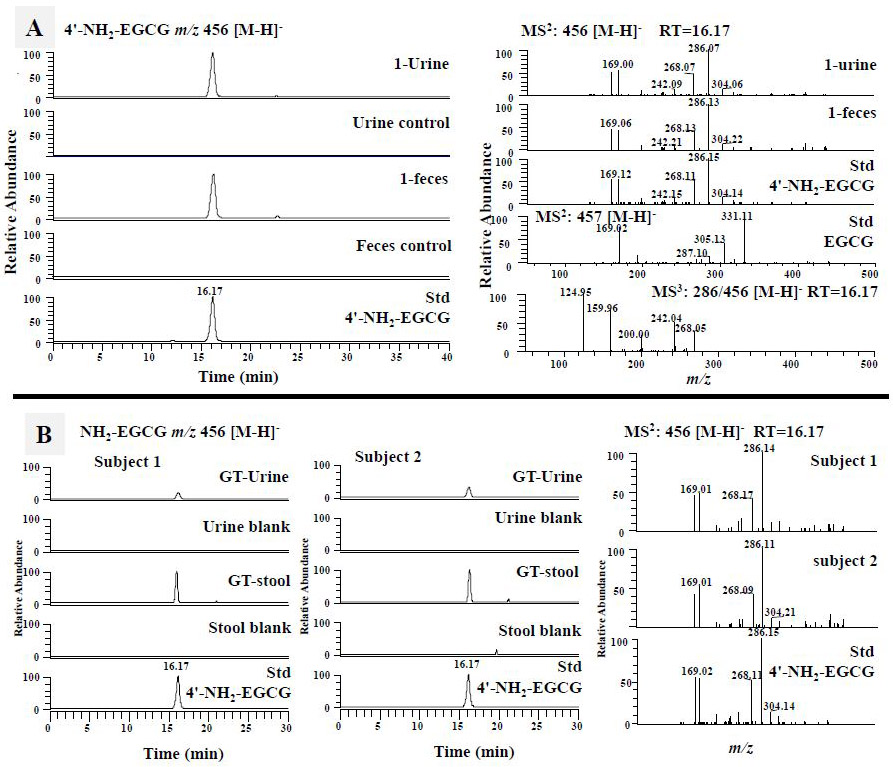Figure 2.

The formation of the aminated metabolite of EGCG, 4'-NH2-EGCG, in mice and humans. (A) The LC chromatograms under selected ion monitoring (SIM) mode of 4'-NH2-EGCG of mouse fecal and urinary samples collected from EGCG (1) treated mice and vehicle treated mice (Control), and the synthetic standard of 4'-NH2-EGCG, the ESI-MS2 (negative ion) spectra of the ion m/z 456 [M-H]− from EGCG-treated mouse samples, synthetic standard of 4'-NH2-EGCG, the ESI-MS2 (negative ion) spectrum of authentic EGCG standard (m/z 457 [M-H]−), and the ESI-MS3 (negative ion) spectrum of the fragment ion m/z 287/456. (B) The LC chromatograms under SIM mode of 4'-NH2-EGCG of human urinary and stool samples collected from two human subjects before and after drinking green tea, and the synthetic standard of 4'-NH2-EGCG, the representative ESI-MS2 (negative ion) spectra of the ion m/z 456 [M-H]− from the two tea drinkers, and the synthetic standard of 4'-NH2-EGCG
